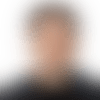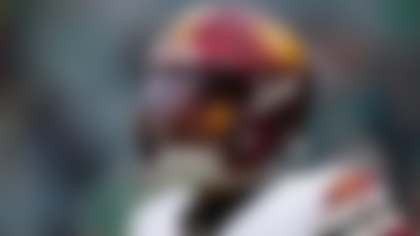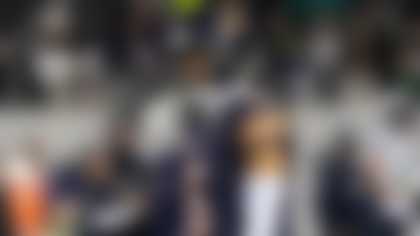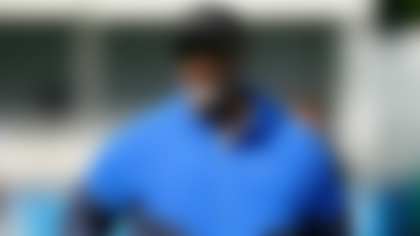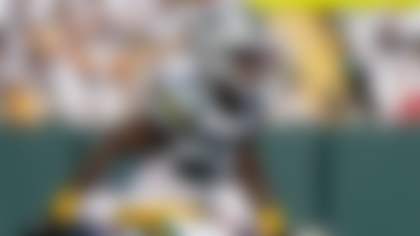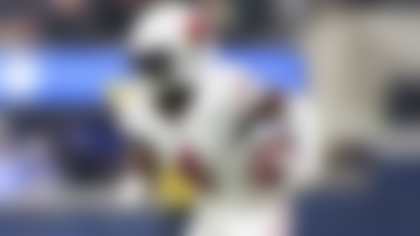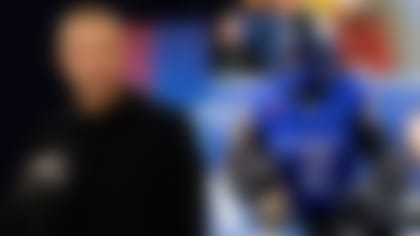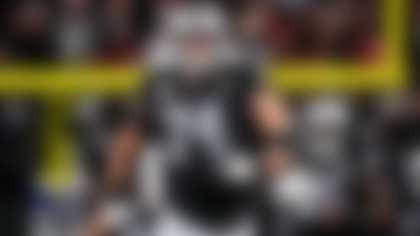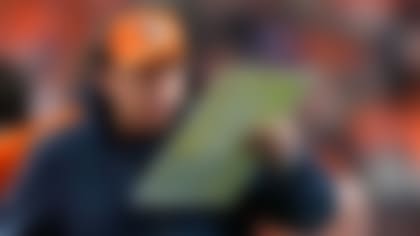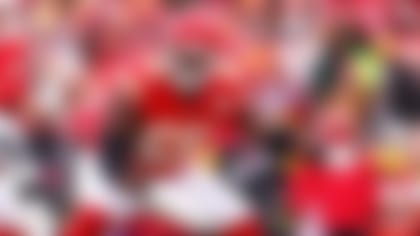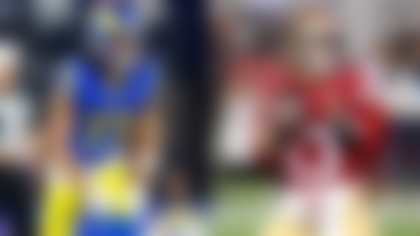No NFL depth chart or projected starting lineup is perfect. Here's a look at the biggest remaining weak spot for every NFC team:
Arizona Cardinals: Protect Carson Palmer and he can still spin the ball, like he did down the stretch last season. Provide the second-worst pass blocking in football -- which is what the Cardinals did, according to Pro Football Focus' ranking -- and Super Bowl dreams will look silly by mid-October. The team's decision to flip Jared Veldheer to right tackle and play D.J. Humphries on the left side, where he played well late last season, is just crazy enough to work.
Atlanta Falcons: The most complete roster in the conference is brimming with vigor and versatility, like the hair of the man who constructed it. General manager Thomas Dimitroff deserves credit for burnishing the team's open edge-rusher spot with numbers, even after Vic Beasley's breakout 2016 season. Beasley will be supported by first-round pick Takkarist McKinley, Adrian Clayborn, Brooks Reed and Derrick Shelby, who can all rush from the outside. Safety is another spot that could stand improvement, but this is a roster with few obvious holes.
Carolina Panthers: Carolina's offense is symbolic of the NFL as a whole. If the tackles can just hold up, the entire group has a chance. Awarding former Vikings OT Matt Kalil a huge contract coming off shoulder surgery ended any competition at left tackle, but it might not end Cam Newton's recurring nightmare from 2016 of pass rushers climbing his back. Michael Oher's future is uncertain following his concussion problems, so right tackle remains wide open, too, with veteran Daryl Williams and rookie Taylor Moton the other options. Newton won't be able to test out his new weapons on offense if he doesn't have time to find them.
Chicago Bears: Drafting receiver Kevin White No. 7 overall could prove to be the defining moment of GM Ryan Pace's tenure, because it forced the team to keep throwing good money after bad at wideout, seemingly at random. Giving $6 million guaranteed to Markus Wheaton was almost as surprising as signing Victor Cruz after already signing slot receiver Kendall Wright. Mike Glennon and Mitchell Trubisky will probably get blamed for everything in the Bears' passing game, but it's possible no one will be open to throw to.
Dallas Cowboys: Will the lack of a pass rush make the new Cowboys cornerbacks look bad, or will it be the other way around? There are no easy answers to Dallas' defensive woes on the roster, other than coordinator Rod Marinelli's penchant for coaching up lackluster talent with fundamentals and hustle. Adding first-round pick Taco Charlton won't be enough to fix a pass rush missing suspended players (David Irving and Randy Gregory) or players with injury concerns like DeMarcus Lawrence and Tyrone Crawford. Dallas' underrated secondary covered for the team's faulty front last season, but that will be far more difficult after an offseason exodus of four key free agents in the back end.
Detroit Lions: Detroit has all the makings of an 8-8 squad, because its strengths aren't that strong and its weak spots aren't that weak. The Lions need depth at defensive end and cornerback, but this is mostly a balanced roster with some talent at each position. The defensive end rotation opposite Ezekiel Ansah, including Kerry Hyder and Cornelius Washington, is my pick for the biggest problem -- one that the Lions hope to make up for with improved interior pressure. The line is a shadow of what it was during the Ndamukong Suh heyday.
Green Bay Packers: For the second straight year in this exercise, it's tempting to mention that inside linebacker is a fine position to have as your weakest. The Packers haven't solved that problem from a year ago and are set to go with the same group that struggled last season in Joe Thomas, Blake Martinez and Jake Ryan. Running back, another low-leverage spot, offers its own questions in Ty Montgomery and bruising rookie Jamaal Williams. It says here the opposite-skilled players should make a better pair than expected.
Los Angeles Rams: There is a bright side to Jared Goff setting the bar so low last year. An improvement to passable with recognizable NFL skills in his second year will feel like a huge win for new head coach Sean McVay and the franchise. (This is the type of grading on a curve that Cam Newton, Andrew Luck and Jameis Winston were never afforded.) The entire 2017 Rams season is essentially a 16-part docu-series trying to solve the mystery: "Is Jared Goff an NFL quarterback?"
Minnesota Vikings: The Vikings, like the Packers, are weakest at the lowest-leverage positions. That's a good thing. The third receiver spot (Laquon Treadwell or Michael Floyd) isn't impressive. The third linebacker (Emmanuel Lamur?) won't be an impact player, but he is taken off the field on most passing downs anyhow. Andrew Sendejo isn't a special starting safety, although playing next to Harrison Smith makes any player look better. The team is hoping that Riley Reiff and Mike Remmers can solve its pass-protection woes -- this remains Minnesota's biggest red flag. The staff under Mike Zimmer hasn't been able to come up with the right protection schemes, no matter who was calling the plays or executing them.
New Orleans Saints: The Saints entered the offseason talking defense, defense, defense. They traded away wide receiver Brandin Cooks so they could load up on defense in the draft. So how do they come out of free agency and the 2017 NFL Draft with Alex Okafor and rookie third-round pick Trey Hendrickson as the top options to start at defensive end opposite Cameron Jordan? Defensive coordinator Dennis Allen extolled the team's improved depth at DE compared to a year ago, which is damning with the faintest of praise.
New York Giants: This is a roster of extremes. There are position groups that rank among the best in football (wide receiver, defensive line, secondary) and position groups that rank among the shakiest (offensive line, linebacker, Eli Manning truthers and running back). Ultimately, the entire season could come down to whether young tackles Ereck Flowers and Bobby Hart reward their organization's undying faith.
Philadelphia Eagles: Is going cheap at cornerback the new moneyball? Defensive coordinator Jim Schwartz will have earned his money if this group performs adequately. The team essentially only returns Jalen Mills and Ron Brooks as key pieces and will need journeyman Patrick Robinson and rookie third-round pick Rasul Douglas to play quality snaps, or the whole secondary could fall apart.
San Francisco 49ers: Some teams were tough to write about for this exercise because they had few weak spots. Then there are teams like the 49ers, where the quarterbacks, wide receivers or tight ends would all make sense as an answer. My pick, however, is at cornerback. It's not a good sign when a second-year, fourth-round pick (Rashard Robinson) is comfortably the team's No. 1 option after playing roughly half the team's snaps in a decent first season. New GM John Lynch couldn't do everything in one offseason.
Seattle Seahawks: Writing about the struggles of the Seahawks' offensive line in the offseason is almost as tiresome as daily non-updates of the team's flirtation with Colin Kaepernick. Seattle has added pieces like second-round pick Ethan Pocic and free agent Luke Joeckel, but Seahawks fans should be past expecting the changes to work. Cut to November and offensive line coach Tom Cable will be getting praised in a national broadcast for his ability to convert a recent MMA fighter into the team's starting right guard, ranked No. 79 out of 80 PFF qualifiers.
Tampa Bay Buccaneers: In the Grimes Media Power Rankings, Miko topped Brent last season for headlines despite Brent turning in one of the most randomly dominant seasons ever for an aging cornerback. Expecting Grimes to back that up at 34 years old is unfair, and the Bucs are very thin after their starters at the position. The team will be targeted in a pass-happy division.
Washington Redskins: The team's D-line makeover came off as confusing, at least until first-round pick Jonathan Allen came along. The Redskins let their best player walk away, then threw a lot of money at role players in Stacy McGee and Terrell McClain who weren't exactly coveted by their old teams. The nose tackle spot, led by another castoff, Ziggy Hood, is also part of a group that could get pushed around.
Follow Gregg Rosenthal on Twitter @greggrosenthal.
